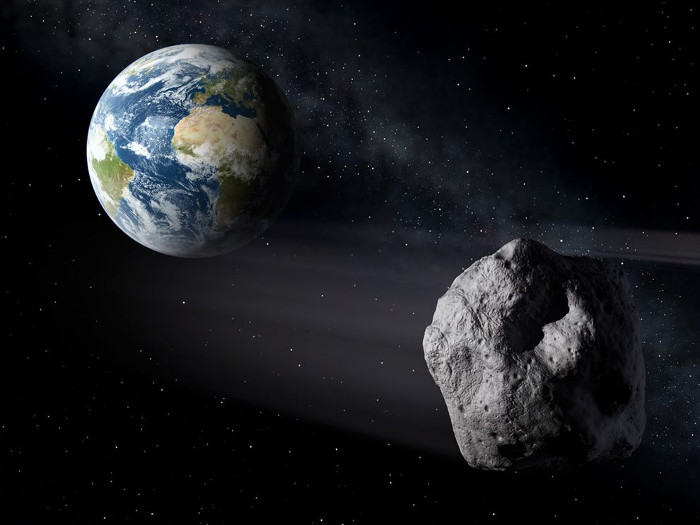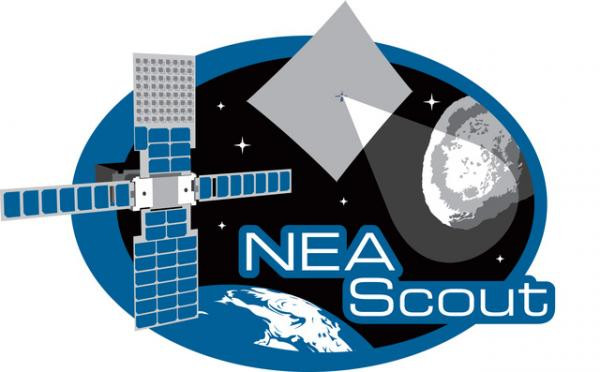NASA discovered a large meteorite heading towards Earth
Do not panic!
NASA's new space surveillance system has discovered a large meteorite that is rapidly moving toward Earth, it is expected to only fly past us safely within the next few hours.

This meteorite was first discovered last week, it is estimated at a safe distance of about 498,000 km from us, 1.3 times further than the distance from the Earth to the Moon.
But thanks to NASA's new software, we had a few days instead of a few hours to evaluate and prepare for the risks.
The meteorite has an official name of 2016 UR36 , first discovered on October 25 through a telescope in Hawaii.
The data was quickly uploaded to NASA's early warning system - called Scout, and within 10 minutes, the software calculated the meteor's ability to move. In it, there are a few points that are able to communicate with the Earth.
It was immediately alerted and 3 other telescopes were mobilized to track and narrow meteorite's mobility capabilities. For hours, calculations determined that meteorites would fly quite close to Earth but no collisions would occur.
Researchers can also determine the size of meteorites between 5 and 25 m in diameter.
Above all, the Scout system has informed scientists five days in advance to prepare for meteorite flight. It may not sound like much, but it is much more than we had before.

"When a telescope detects the first time a moving object, all you know is just a dot moving in the sky, " astronomer Paul Chodas of the Orbital Calculation Lab NASA, who ran the Scout program, told Joe Palca from NPR.
" You have no information about its distance. The more telescopes are used to observe an object, the more data you get about it, the more you know how big it is and how to confront it. But sometimes, you don't have much time to observe . "
There are several examples of inadequate research time: the researchers first discovered a meteorite that is rushing to Earth before it enters the atmosphere, meteorite 2008 TC3 , which is located only 19 hours before it collided with Earth.
The meteorite was identified as a real threat 12 hours before it exploded in the Nubian desert in Sudan in October 2008.
In February 2013, an asteroid about 20m wide exploded in Chelyabinsk - Russia without any warning.
The goal of the Scout program is to accelerate the identification process for meteorites that we see and even faster in determining whether it is a threat or not, helping NASA respond promptly.
Although some are overlooked, NASA has discovered many meteorites, about 5 meteors every night and currently has more than 15,000 objects near Earth recorded as capable of colliding with the Earth.
Scout helps narrow down the possibilities, identify real threats and how to respond if a collision occurs. Until recently it was still in the testing process and the discovery of 2016 UR36 became the first test. The program is expected to be fully operational by the end of this year.
Along with Scout, NASA also has a Sentry program .
While the Scout is searching and tracking small objects near Earth, the Sentry will search and track objects large enough to wipe out an entire city, especially near Earth-sized objects. greater than 140 m.
The Sentry has listed 655 near-Earth objects that have considered that these objects can cause significant damage.
If we can do better to identify and track the movement of good luck in a timely manner, we will have the opportunity to stop them.
" If we know clearly and clearly here, we know that we will be able to do something for 10 years, 20 years or 30 years.
We just need to redirect the meteorite by creating a small impact that makes it divert before hitting billions of miles, 'Ed Lu, B612 threatening meteorite CEO told NPR.
- 5 NASA steps dealing with meteorites crash into Earth
- Video: The 400 meter long meteorite is capable of crashing into the Earth
- Two large meteors are flying towards Earth
- Giant meteorite approached the Earth at midnight on September 7
- The 25m-wide meteorite grazes the Earth on the night of Halloween
- NASA dismisses the information of giant meteorite
- NASA says a giant meteorite will fly over the Earth in the next 48 hours
- NASA admits helplessness against meteors
- A meteorite has just over 5000 km away from Earth
- NASA speaks about meteorites larger than the Great Pyramid rushing to Earth
- Meteors just fly close to the earth
- Large meteorite by bus has just approached the Earth
 Van Allen's belt and evidence that the Apollo 11 mission to the Moon was myth
Van Allen's belt and evidence that the Apollo 11 mission to the Moon was myth The levels of civilization in the universe (Kardashev scale)
The levels of civilization in the universe (Kardashev scale) Today Mars, the sun and the Earth are aligned
Today Mars, the sun and the Earth are aligned The Amazon owner announced a secret plan to build a space base for thousands of people
The Amazon owner announced a secret plan to build a space base for thousands of people